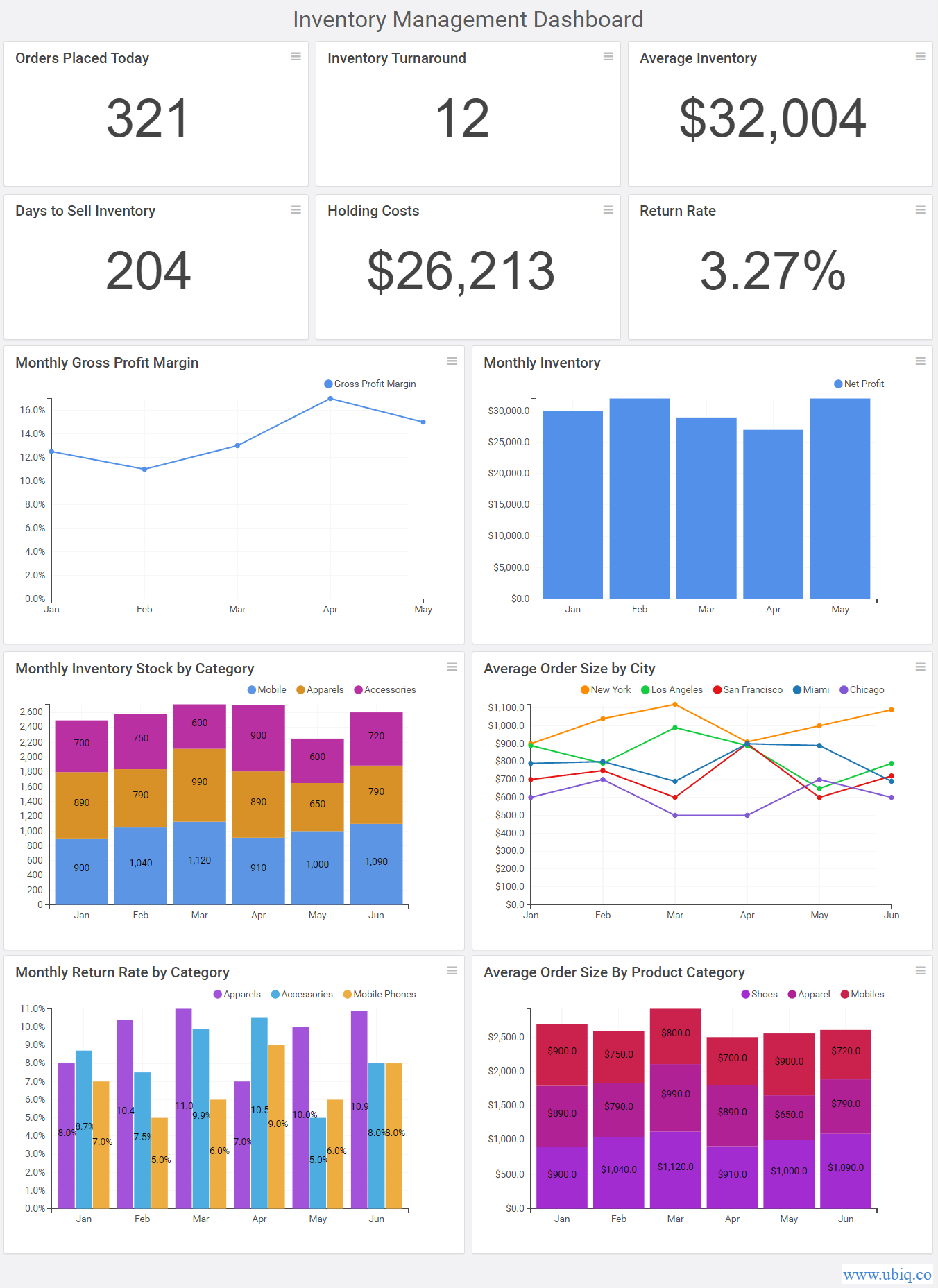Inventory Management KPI metrics help you measure inventory performance, and improve retail supply chain for your business. They enable you to identify and fix issues quickly. Here are the top 5 Inventory KPI metrics for Ecommerce & Retail business.
Top 5 Inventory Management KPI Metrics for Ecommerce & Retail Business
Here are the top 5 Inventory Management KPI metrics for Ecommerce & Retail business.
1. Inventory Turnover or Days on Hand
Inventory Turnover is one of the most important Inventory Management KPI metrics that tells you the number of times your inventory has been sold out & replaced, during a given time period. It is calculated as
Inventory Turnaround =Cost of Goods Sold / Average Inventory
OR
Inventory Turnaround = Sales / Inventory
If your retail or ecommerce business has high inventory turnover then it means you have excess stock of items or low sales. In that case, you may need to increase promotional activities to boost sales, or reduce inventory to save costs.
Bonus Read : Top 5 SaaS KPI Metrics You Must Monitor
2. Average Inventory
Average Inventory is one of the most popular inventory management KPI metrics that helps you estimate the amount of inventory your business has on hand, during a time period. Average Inventory for a given month is
Average Inventory = (Beginning Inventory + Ending Inventory) / 2
Average inventory helps maintain constant flow of inventory in and out, avoid unexpected spikes and drops in inventory. It is also useful in calculating Inventory Turnaround mentioned above.
Bonus Read : How to Create Marketing Dashboard
3. Days to Sell Inventory (DSI)
Average Days to Sell Inventory is the number of days it will take your business to sell your inventory. DSI is calculated as
Days to Sell Inventory = (Inventory/Cost of Sales) x 365
High price items sell slowly compared to low-price ones. So you may want to calculate separate DSI for each product category.
Bonus Read : Top 5 Retail KPIs& Metrics to Monitor Regularly
4. Holding Costs
Holding Costs is another key inventory management KPI metrics. There are numerous costs associated with inventory management, which can eat into your profits. So it is essential to carefully include all incurred costs for holding inventory, such as cost of damaged & spoiled goods, cost of storage space, insurance, labor.
You can reduce your holding costs by defining a reorder point, that is, the minimum inventory stock for an item, that will trigger its reorder.
Bonus Read : How to Design a Dashboard for Your Business
5. Stock Out
Stock Out is the number of times your business is unable to meet demand since it out of stock for a particular item. It is important to track stock out since it can lead to lost sales, missed opportunities and unhappy customers.
It also gives you an idea about how effective your business is at production and purchasing.
Bonus Read : Key Dashboard Design Principles of Successful Dashboard
Track these Inventory Managment KPI metrics in a dashboard and regularly review with your team. Here’s an example of a Inventory Management KPI dashboard created using Ubiq.

There are plenty of Inventory management KPI metrics but the above performance metrics matter the most. Monitor them every month and share them with your team to get insights.
Ubiq makes it easy to visualize data in minutes, and monitor in real-time dashboards. Try it Today!
